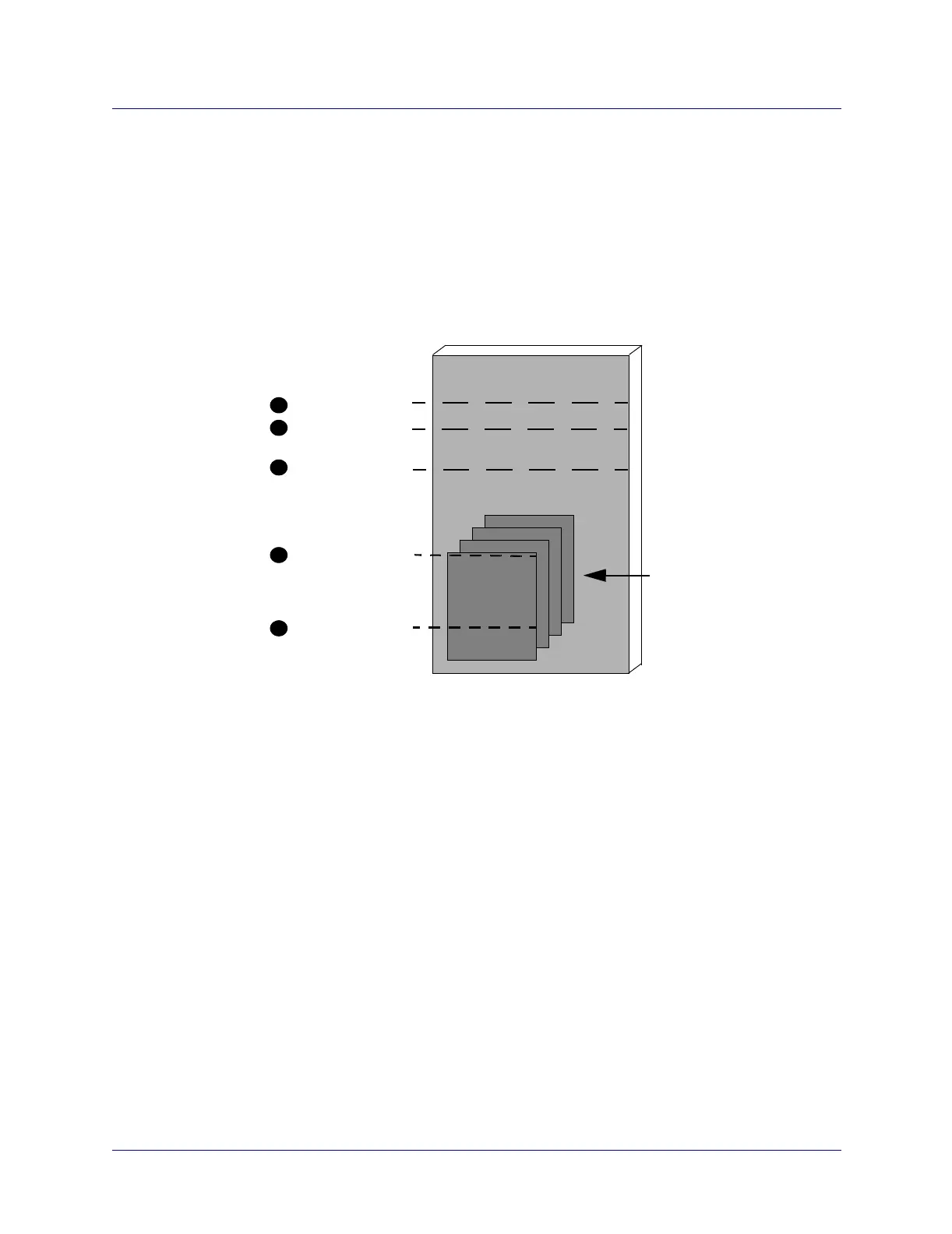ATM FCP Queues
ATM Services Configuration Guide for CBX 3500, CBX 500, GX 550, and B-STDX 9000 1/19/055-17
Beta Draft Confidential
Both local and global thresholds are used for congestion notification and discarding. A
VC is considered congested only if its local queue is above the local congestion
threshold, and the global queue on the port is above the global congestion threshold.
Similarly, a VC enters a discard state only if the local queue length is greater than the
local discard threshold, and the port queue length is greater than the global discard
threshold.
Figure 5-6 shows the five ATM FCP buffer thresholds.
Figure 5-6. ATM FCP Buffers
The buffer space between the Global Discard and Global CLP0+1 thresholds allows
the VCs on this port to continue to queue cells after the Global Discard threshold is
exceeded. Any VC that has also exceeded its Local Discard threshold would continue
to queue either CLP0 cells (if the circuit is using the CLP1 discard method) or cells
from the current packet (if the circuit is using the EPD method). Circuits can continue
to queue cells until the Global CLP0+1 threshold is reached.
The CLP0+1 threshold enables you to reserve buffers before the maximum buffer
capacity is reached. Lucent recommends that you reserve a sufficient number of
buffers to allow new and idle circuits to start up and get access to buffers.
For more information about buffer allocation, see “Frequently Asked Questions About
the FCP” on page 6-14.
Global CLP0+1
Global Discard
Global Congestion
Local Discard
Local Congestion
Per circuit buffer allocations
Port Buffers
Global Thresholds
(CLP1 or EPD)
(CLP1 or EPD)
based on the MCR
2
3
4
5
1
